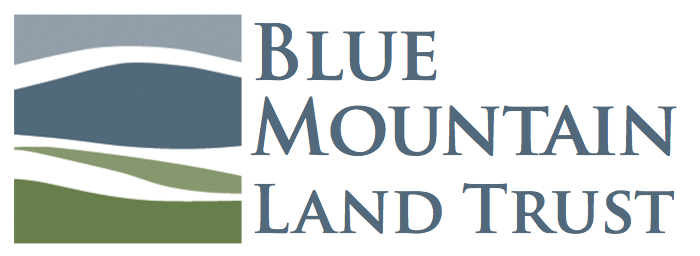With great excitement, the Blue Mountain Land Trust opened a second office in John Day, Oregon in early July. This expansion doubles the size of our service area and adds Grant, Wheeler, Gilliam and Morrow counties in Oregon to the communities we serve.
Expansion into the John Day River Basin was the result of two years of work with the key natural resources agencies that serve that area. After much discussion, we were invited to expand our operations there by local representatives of the Natural Resources Conservation Service, a number of County Soil and Water Conservation Districts, the Oregon Watershed Enhancement Board, the Confederated Tribes of the Warm Springs Reservation and the Confederated Tribes of the Umatilla Indian Reservation. These agencies believe that many landowners in those four counties will benefit substantially from the services of our land trust.
The John Day River Basin is one of the most scenic and environmentally significant regions in the country. The third longest undammed river in the continental United States, the John Day River flows 280 miles from the Strawberry Mountains to the Columbia River. The John Day provides pristine habitat for wild steelhead, Chinook salmon, westslope cutthroat, and interior redband. The river basin hosts the last remaining wild populations of Chinook salmon and summer steelhead populations in the Columbia River Basin.
Farms and ranches form the economic backbone of the John Day River Basin. Over half of the basin’s terrain is agricultural land and of that, 60% is devoted to cattle production. With 11,000 people and 70,000 head of cattle in the region, cattle outnumber people 7 to 1.
The conversion of large agricultural acreages to non-farm uses and a huge generational transfer of land ownerships are underway in the John Day. These changes threaten the economic future of these working lands, and the integrity of fish and wildlife habitat they host.
Conversion of ag land can cause reduced land productivity, degraded water quality and quantity, overrun rangelands with invasive weeds, and catastrophic wildfires.
A major goal of BMLT’s work there will be to ensure that farms and ranches remain economically and environmentally viable. Conservation easements - alone or in combination with fish and wildlife habitat restoration - can greatly enhance the agricultural sustainability of these lands.
Amanda “Marti” Martino will lead our work in this area as the John Day office’s conservation manager. A Michigan native, Marti is a 2016 graduate of the University of Oregon School of Law and holds two bachelor’s degrees from Siena Heights University in Adrian, Michigan.
Marti will work closely with a John Day area advisory council composed of many of the partners who invited us to the region. She will be supported by BMLT’s Conservation Director, Jason Bulay.
As we get settled in the John Day, our Education and Development Specialist, Lauren Platman, and I will work on education and development opportunities in the region.
Expanding Blue Mountain Land Trust’s service area into eastern Oregon will strengthen our operations and finances by providing economies of scale and diversifying our conservation projects. More importantly, BMLT’s presence in the John Day River Basin provides another resource to landowners to better preserve their working lands in this precious region.
We look forward to the exciting work ahead and will keep you posted on the progress.

